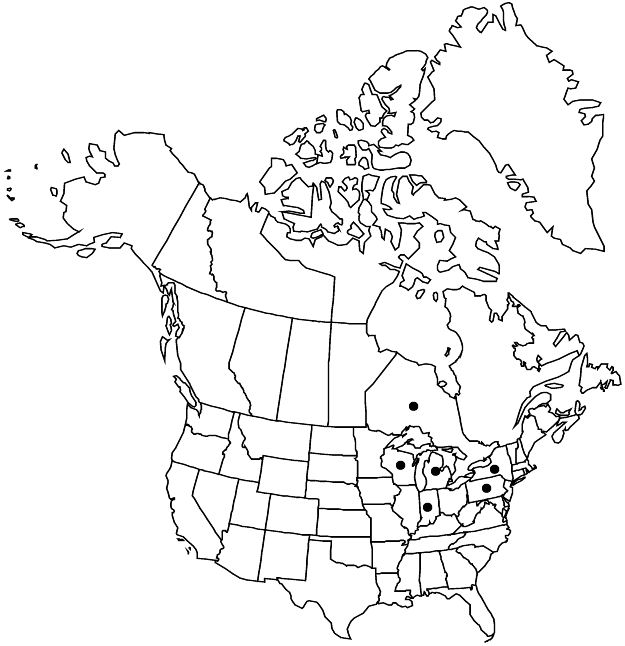Crataegus prona
J. Elisha Mitchell Sci. Soc. 19: 17. 1903.
Shrubs or trees, 60 dm. Stems: twigs: new growth reddish green, glabrous, 1-year old reddish brown, sometimes very dark, older mid gray; thorns on twigs recurved, 2-years old dark blackish red, ± shiny, ± slender, 3–5 cm. Leaves: petiole 2–4 cm, glabrous, eglandular or sparsely glandular; blade deltate-ovate to ovate, 4–7 cm length/width = 1.1–1.2, subcoriaceous, base broadly rounded to ± cuneate, lobes 3–5 per side, sinuses usually shallow, lobe apex acute, margins strongly serrate, veins 5 or 6 per side, apex acute to acuminate, surfaces glabrous except adaxial appressed-hairy young. Inflorescences 5–12-flowered; branches glabrous; bracteoles few, margins glandular. Flowers 16–18 mm diam.; hypanthium glabrous; sepals narrowly triangular, 5–6 mm, margins subentire, abaxially glabrous; stamens 6–10, anthers red to purple; styles 3 or 4. Pomes reddish orange to bright red, suborbicular to oblong, 8–11 mm diam.; sepals patent-reflexed or commonly erose; pyrenes 3 or 4, dorsally grooved.
Phenology: Flowering May; fruiting Sep–Oct.
Habitat: Brush
Elevation: 100–300 m
Distribution

Ont., Ind., Mich., N.Y., Pa., Wis.
Discussion
Crataegus prona ranges from Wisconsin and Indiana through Michigan to New York and Pennsylvania.
Crataegus prona is similar to C. populnea but with proportionately wider leaves and narrow pomes. When better known, it may prove the same as C. populnea. Crataegus gravis is a form with more oblong fruit and smaller leaves with sharper lobes.
Selected References
None.